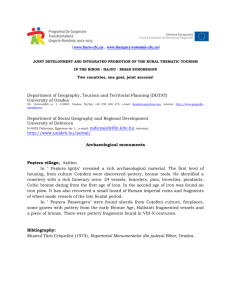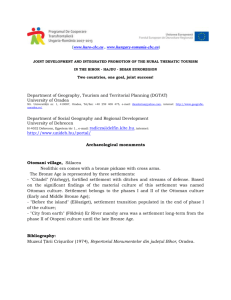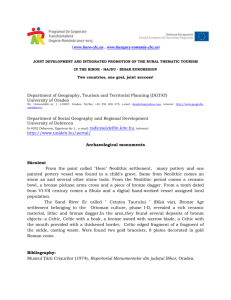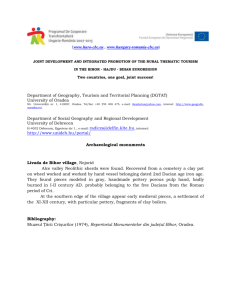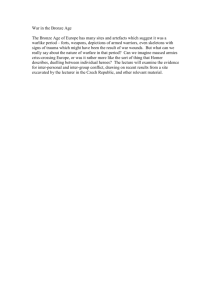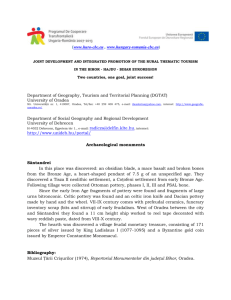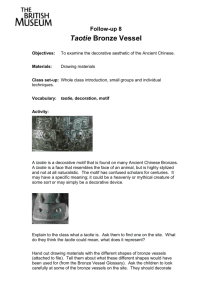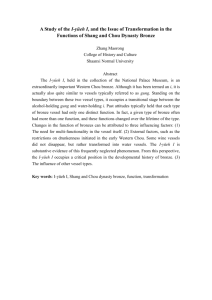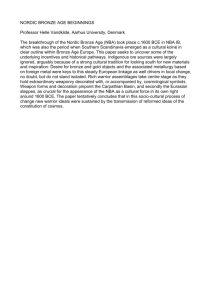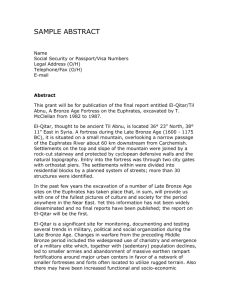JOINT DEVELOPMENT AND INTEGRATED PROMOTION OF THE
advertisement
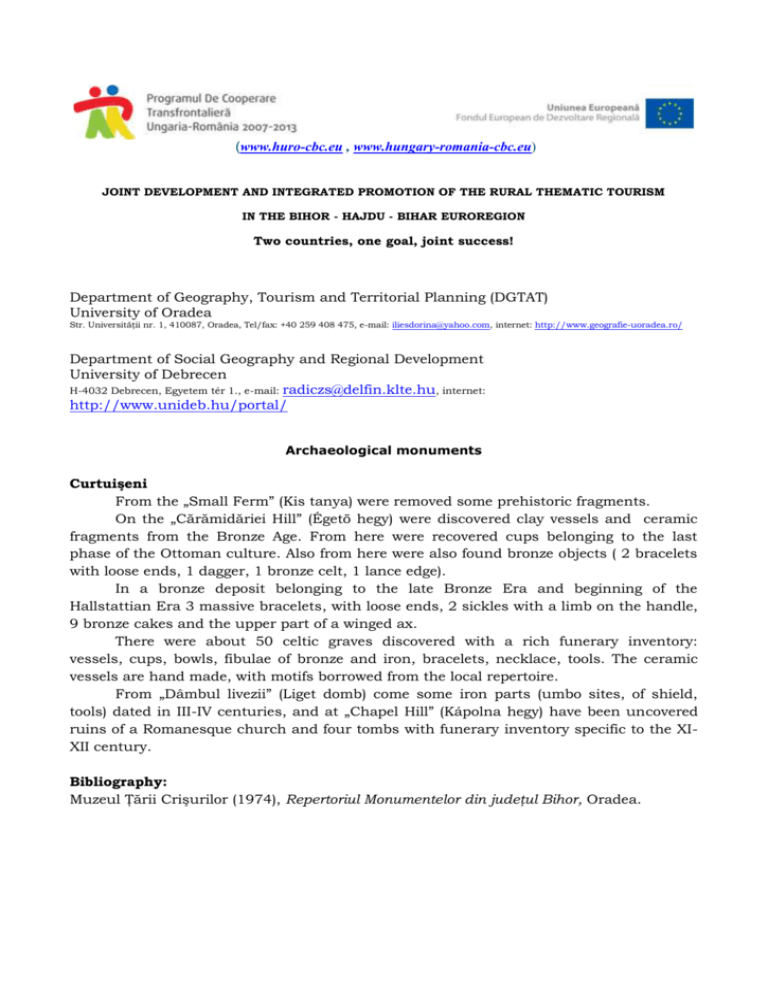
(www.huro-cbc.eu , www.hungary-romania-cbc.eu) JOINT DEVELOPMENT AND INTEGRATED PROMOTION OF THE RURAL THEMATIC TOURISM IN THE BIHOR - HAJDU - BIHAR EUROREGION Two countries, one goal, joint success! Department of Geography, Tourism and Territorial Planning (DGTAT) University of Oradea Str. Universităţii nr. 1, 410087, Oradea, Tel/fax: +40 259 408 475, e-mail: iliesdorina@yahoo.com, internet: http://www.geografie-uoradea.ro/ Department of Social Geography and Regional Development University of Debrecen H-4032 Debrecen, Egyetem tér 1., e-mail: radiczs@delfin.klte.hu, internet: http://www.unideb.hu/portal/ Archaeological monuments Curtuişeni From the „Small Ferm” (Kis tanya) were removed some prehistoric fragments. On the „Cărămidăriei Hill” (Égetö hegy) were discovered clay vessels and ceramic fragments from the Bronze Age. From here were recovered cups belonging to the last phase of the Ottoman culture. Also from here were also found bronze objects ( 2 bracelets with loose ends, 1 dagger, 1 bronze celt, 1 lance edge). In a bronze deposit belonging to the late Bronze Era and beginning of the Hallstattian Era 3 massive bracelets, with loose ends, 2 sickles with a limb on the handle, 9 bronze cakes and the upper part of a winged ax. There were about 50 celtic graves discovered with a rich funerary inventory: vessels, cups, bowls, fibulae of bronze and iron, bracelets, necklace, tools. The ceramic vessels are hand made, with motifs borrowed from the local repertoire. From „Dâmbul livezii” (Liget domb) come some iron parts (umbo sites, of shield, tools) dated in III-IV centuries, and at „Chapel Hill” (Kápolna hegy) have been uncovered ruins of a Romanesque church and four tombs with funerary inventory specific to the XIXII century. Bibliography: Muzeul Ţării Crişurilor (1974), Repertoriul Monumentelor din judeţul Bihor, Oradea.
